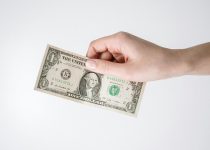Can High Temperature Damage Clean Grills?
Yes, high temperatures can damage clean grills. Components like burners and grates may warp, crack, or discolor if exposed to excessive heat. Stainless steel, cast iron, and aluminum each react differently, so knowing their heat tolerance is crucial. Regular maintenance checks and monitoring temperature with a thermometer can help prolong your grill's lifespan. By taking these precautions, you can keep your grill safe and functional. Stick around to discover more tips for maintaining your grill's performance.
Table of Contents
Key Takeaways
- High temperatures can warp or crack grill burners, reducing their effectiveness and lifespan.
- Discoloration of grates often indicates overheating, which can lead to brittleness and damage.
- Excessive heat may cause ignition system failures, preventing the grill from lighting properly.
- Regular maintenance checks are essential to identify signs of heat damage early on.
- Following the manufacturer's temperature guidelines helps prevent damage to clean grills.
Understanding Grill Materials and Their Heat Tolerance
While you might think all grills can handle high temperatures, understanding the materials they're made of is crucial. Different grills use various materials like stainless steel, cast iron, and aluminum, each with unique heat tolerances.
Stainless steel is durable and resistant to rust, making it a popular choice for many grillers. Cast iron retains heat well but can crack under extreme temperatures if not cared for properly. Aluminum is lightweight and heats up quickly but may warp when exposed to high heat for extended periods.
Knowing how each material reacts to heat helps you choose the right grill for your cooking style and prevents potential damage. Always consider the manufacturer's guidelines to ensure your grill performs at its best.
The Impact of High Temperatures on Grill Components
High temperatures can significantly affect various components of your grill, leading to potential damage if not monitored. For instance, parts like the burners, grates, and ignition systems can suffer from extreme heat exposure. Understanding how these components react can help you maintain your grill effectively.
| Component | Effect of High Temperature | Maintenance Tip |
|---|---|---|
| Burners | Warping or cracking | Regularly check for damage |
| Grates | Discoloration or brittleness | Use a heat shield when possible |
| Ignition System | Failure to ignite | Inspect wiring and connections |
Keep an eye on your grill's components to ensure they're functioning properly and extend their lifespan. Regular checks can save you time and money in the long run.
Signs of Heat Damage to Look Out For
If you notice changes in your grill's performance or appearance, it might be a sign of heat damage.
Keep an eye out for these signs:
- Discoloration: If the grill surface shows unusual colors, it could indicate overheating.
- Warped Grates: Grates that are bent or warped may be a result of excessive heat exposure.
- Cracked Components: Inspect for cracks or splits in any plastic or ceramic parts, which can weaken over time.
- Uneven Heating: If certain areas of the grill aren't heating evenly, it may suggest damage to the burners or heat distribution.
Identifying these signs early can help you take action to restore your grill's functionality and safety.
Tips for Safe Grilling Practices at High Temperatures
Recognizing the signs of heat damage is just the first step; ensuring safe grilling practices at high temperatures is vital for both your safety and your grill's longevity.
Always preheat your grill, but don't exceed the manufacturer's recommended temperature settings. Use a reliable thermometer to monitor the heat, keeping it within a safe range.
When grilling, keep a spray bottle of water handy to manage flare-ups. Avoid leaving your grill unattended, and never wear loose clothing that could catch fire.
Lastly, let your grill cool down before cleaning to prevent burns. By following these tips, you'll enjoy delicious meals without compromising your safety or your grill's performance.
Happy grilling!
Frequently Asked Questions
Can High Temperatures Affect Grill Flavor or Food Quality?
High temperatures can enhance flavors by creating a sear, but they can also lead to burnt food or loss of moisture. You'll want to monitor your cooking to ensure the best quality and taste.
How Often Should I Check My Grill for Heat Damage?
You should check your grill for heat damage regularly, ideally before each use. Inspect for signs like warping or discoloration, ensuring your grill performs well and safely every time you fire it up.
Are Certain Grilling Techniques Safer at High Temperatures?
Certain grilling techniques, like searing meats or using direct heat, can be safer at high temperatures. Just keep a close eye on your food to prevent charring or burning, ensuring a delicious result without any health risks.
What Is the Ideal Temperature for Cooking Different Meats?
When cooking different meats, aim for 145°F for pork and beef, 165°F for chicken, and 145°F for fish. Using a meat thermometer ensures you achieve the perfect doneness while keeping your meals safe and delicious.
Does High Temperature Affect Grill Accessories or Tools?
High temperatures can indeed affect your grill accessories or tools. They may warp, discolor, or degrade over time, so it's important to monitor heat levels and choose materials designed to withstand intense cooking conditions.


